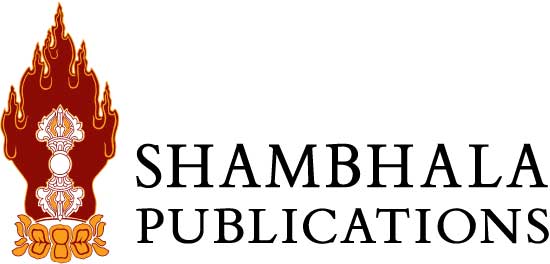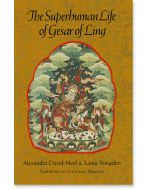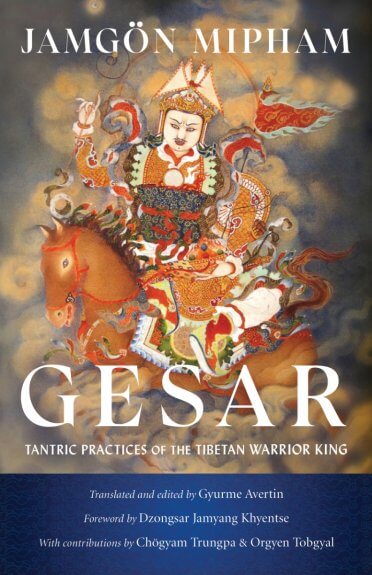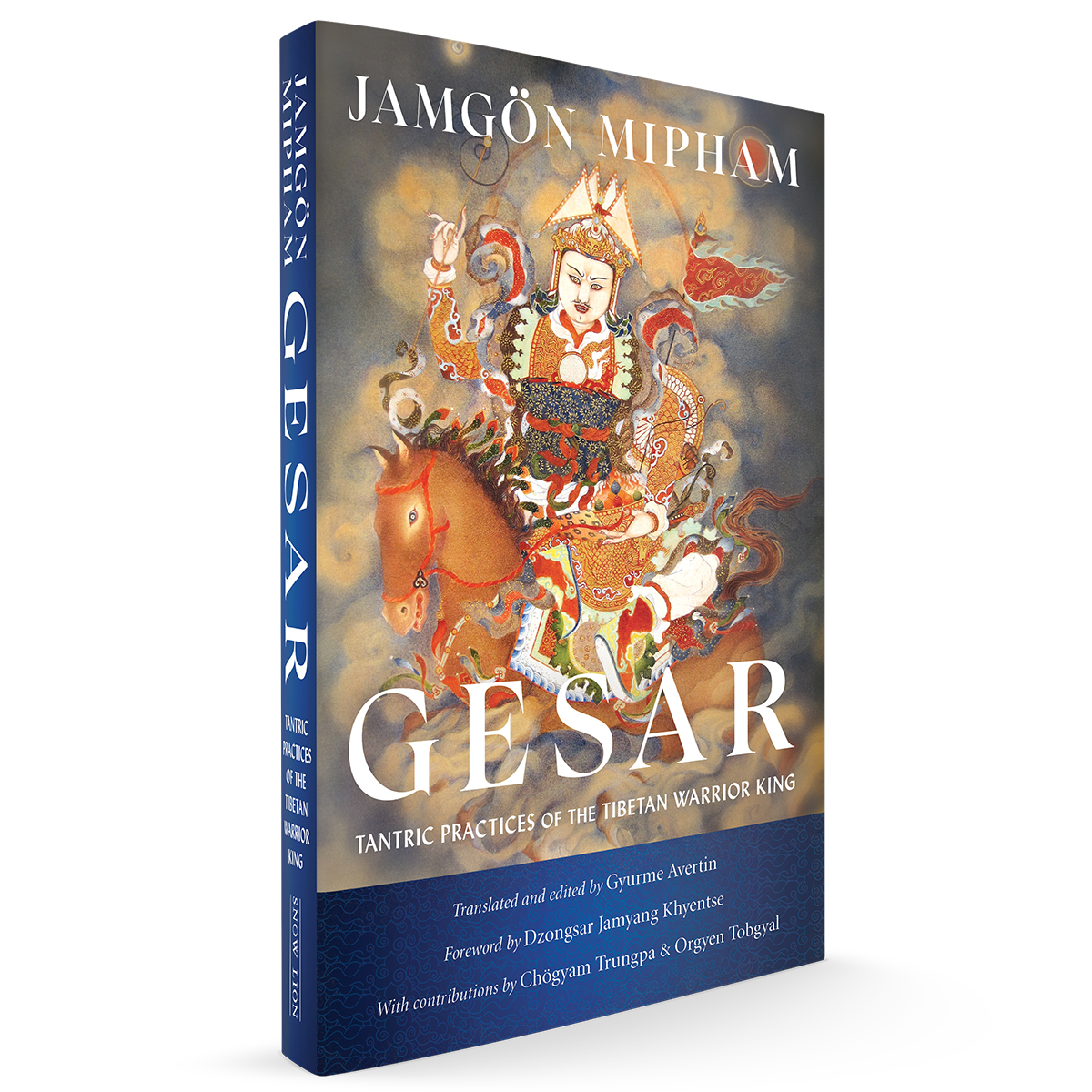Gesar
By Jamgon Mipham
Foreword by Dzongsar Jamyang Khyentse
Edited by Gyurme Avertin
Translated by Gyurme Avertin
Contributions by Chogyam Trungpa
Contributions by Orgyen Tobgyal
-
Amazon eBook Download
Privacy PolicyBefore you go, sign up to receive news & promotions from Shambhala.com
Apple eBook Download
Privacy PolicyBefore you go, sign up to receive news & promotions from Shambhala.com
Google eBook Download
Privacy PolicyBefore you go, sign up to receive news & promotions from Shambhala.com
Kobo eBook Download
Privacy PolicyBefore you go, sign up to receive news & promotions from Shambhala.com
Nook eBook Download
Privacy PolicyBefore you go, sign up to receive news & promotions from Shambhala.com
Snow Lion08/29/2023Pages: 368Size: 5.5 x 8.5ISBN: 9781611809152DetailsPLEASE NOTE: The teachings and practices presented in this book are Secret Mantra Vajrayana teachings. As such, to benefit from this volume and the practices it contains, it is essential to first receive from a qualified master the Gesar Dorje Tsegyal empowerment or “entrustment with his life force,” the reading transmission of the practice, and the associated instructions. If you have yet to receive the empowerment and reading transmission, it is best to keep this book on your shrine as an object of veneration until you receive them. The empowerment is required in order to properly practice the teachings in this book.
Gesar of Ling is well known in Tibetan history, literature, and folklore. But, for Buddhist practitioners, he is an enlightened tantric protector and deity—an emanation of Padmasambhava. Engaging in Gesar practice is meant to generate positive circumstances and increase one’s experiences and realization in Buddhist practice.
Gesar of Ling is widely known as the hero of Tibet’s national oral epic, considered the longest in the world. He is also the focus of Buddhist practices in which the visualization and invocation of his enlightened form is used as a tantric method to progress towards buddhahood.
This work contains fifty-two prayers, practices, and instructions compiled by Ju Mipham Rinpoche (1846–1912) meant to be practiced under the guidance of an authentic spiritual teacher. These practice texts detail poetic imagery and include guru yoga, praises, invocations, and divinations. Central to all of these practices is raising what is known in Tibetan as lungta, or “windhorse,” a dignified energy that propels and enhances one’s wisdom, compassion, and power to benefit all beings.RelatedCheck items to add to the cart or-
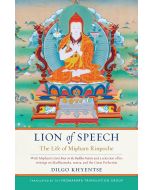
-
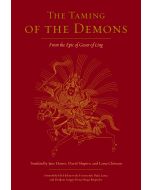 The Taming of the DemonsTranslated by Jane Hawes, David Shapiro, and Lama Chonam
The Taming of the DemonsTranslated by Jane Hawes, David Shapiro, and Lama Chonam
Contributions by H.H. the Fourteenth Dalai Lama and Dudjom Sangye Pema Shepa$39.95Paperback -
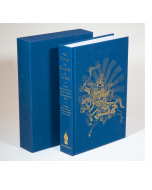
-
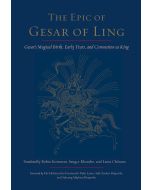
Author Bio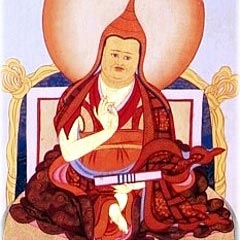 Jamgon Mipham (1846–1912), one of the great luminaries of Tibetan Buddhism in modern times, has had a dominant and vitalizing influence on the Nyingma School and beyond. He was an important member of the Rimé, or nonsectarian movement, which did much to strengthen and preserve the entire tradition. A scholar of outstanding brilliance and versatility, his translated works are eagerly anticipated by English-language readers.
Jamgon Mipham (1846–1912), one of the great luminaries of Tibetan Buddhism in modern times, has had a dominant and vitalizing influence on the Nyingma School and beyond. He was an important member of the Rimé, or nonsectarian movement, which did much to strengthen and preserve the entire tradition. A scholar of outstanding brilliance and versatility, his translated works are eagerly anticipated by English-language readers.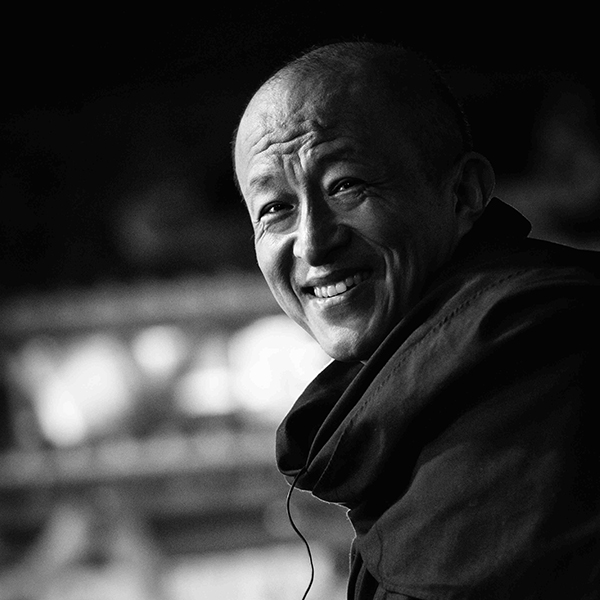 Dzongsar Jamyang Khyentse (Khyentse Norbu) is a Tibetan Buddhist lama who travels and teaches internationally and is also an award-winning filmmaker. He is the abbot of several monasteries in Asia and the spiritual director of meditation centers in Vancouver, San Francisco, Sydney, Hong Kong, and Taipei. He is also head of a Buddhist organization called Siddhartha’s Intent.Gyurme Avertin has served as the principal translator for Orgyen Tobgyal Rinpoche and several other eminent Tibetan teachers, accompanying them on their frequent visits to the West. Spending extended periods of time in India and Nepal, he has trained extensively in both the sutra and tantra teachings of Tibetan Buddhism, studying with some of the most accomplished masters of our times. His published works include The Gathering of Vidyadharas: Text and Commentaries on the Rigdzin Düpa (Snow Lion, 2017), Sublime Lady of Immortality: Teachings on Chimé Phakmé Nyingtik (Rangjung Yeshe, 2021), as well as numerous talks and prayers.Gyurme Avertin has served as the principal translator for Orgyen Tobgyal Rinpoche and several other eminent Tibetan teachers, accompanying them on their frequent visits to the West. Spending extended periods of time in India and Nepal, he has trained extensively in both the sutra and tantra teachings of Tibetan Buddhism, studying with some of the most accomplished masters of our times. His published works include The Gathering of Vidyadharas: Text and Commentaries on the Rigdzin Düpa (Snow Lion, 2017), Sublime Lady of Immortality: Teachings on Chimé Phakmé Nyingtik (Rangjung Yeshe, 2021), as well as numerous talks and prayers.
Dzongsar Jamyang Khyentse (Khyentse Norbu) is a Tibetan Buddhist lama who travels and teaches internationally and is also an award-winning filmmaker. He is the abbot of several monasteries in Asia and the spiritual director of meditation centers in Vancouver, San Francisco, Sydney, Hong Kong, and Taipei. He is also head of a Buddhist organization called Siddhartha’s Intent.Gyurme Avertin has served as the principal translator for Orgyen Tobgyal Rinpoche and several other eminent Tibetan teachers, accompanying them on their frequent visits to the West. Spending extended periods of time in India and Nepal, he has trained extensively in both the sutra and tantra teachings of Tibetan Buddhism, studying with some of the most accomplished masters of our times. His published works include The Gathering of Vidyadharas: Text and Commentaries on the Rigdzin Düpa (Snow Lion, 2017), Sublime Lady of Immortality: Teachings on Chimé Phakmé Nyingtik (Rangjung Yeshe, 2021), as well as numerous talks and prayers.Gyurme Avertin has served as the principal translator for Orgyen Tobgyal Rinpoche and several other eminent Tibetan teachers, accompanying them on their frequent visits to the West. Spending extended periods of time in India and Nepal, he has trained extensively in both the sutra and tantra teachings of Tibetan Buddhism, studying with some of the most accomplished masters of our times. His published works include The Gathering of Vidyadharas: Text and Commentaries on the Rigdzin Düpa (Snow Lion, 2017), Sublime Lady of Immortality: Teachings on Chimé Phakmé Nyingtik (Rangjung Yeshe, 2021), as well as numerous talks and prayers. Chögyam Trungpa (1940–1987)—meditation master, teacher, and artist—founded Naropa University in Boulder, Colorado, the first Buddhist-inspired university in North America; the Shambhala Training program; and an international association of meditation centers known as Shambhala International. He is the author of numerous books, including Shambhala: The Sacred Path of the Warrior, Cutting Through Spiritual Materialism, and The Myth of Freedom.Praise
Chögyam Trungpa (1940–1987)—meditation master, teacher, and artist—founded Naropa University in Boulder, Colorado, the first Buddhist-inspired university in North America; the Shambhala Training program; and an international association of meditation centers known as Shambhala International. He is the author of numerous books, including Shambhala: The Sacred Path of the Warrior, Cutting Through Spiritual Materialism, and The Myth of Freedom.Praise"Today’s world moves so fast. Joy, sadness, or simply reading a short email can open the door to emotional volatility and uncertainty more quickly and intensely than ever before—it’s why the tsunami of human emotion is so out of control. Now more than ever before, we need to develop our ability to remain strong and kind within the fortress of who we really are. If someone like Mipham Rinpoche had no qualms about using Gesar—the king, the legend, the protector, the guide, and the guru—as a path to accomplishing authentic presence and emotional stability, why shouldn’t we make use of this extraordinary path too?" —Dzongar Jamyang Khyentse
"Collects together for the first time the Gesar practices and supplications written by the eminent nineteenth-century master Jamgön Mipham. Helpful introductory essays by Chögyam Trungpa Rinpoche and Orgyen Tobgyal Rinpoche elucidate the tantric significance of Gesar practice." —Buddhadharma
Selected Reader Reviews
